Artist in Focus: Grant Wood
Two weeks over the Christmas period in London and Paris provided the perfect opportunity to play catch-up on some of the incredible exhibitions which have been popping up in both cities, and for which I have been pining from afar. Whether it be Picasso Portraits at the National Portrait Gallery in London or Bazille at the d’Orsay in Paris, I have been literally itching to get inside the galleries to discover artists both familiar and new, set within the context of a new curatorial manifestation. Out of these exhibitions, I walked away struck by certain paintings and by certain artists whose work I am keen to share on The Daily Norm. For life is a continuing learning curb, and even behind the most famous work lies an entire portfolio of unknown paintings coming from a relatively un-talked of artist.
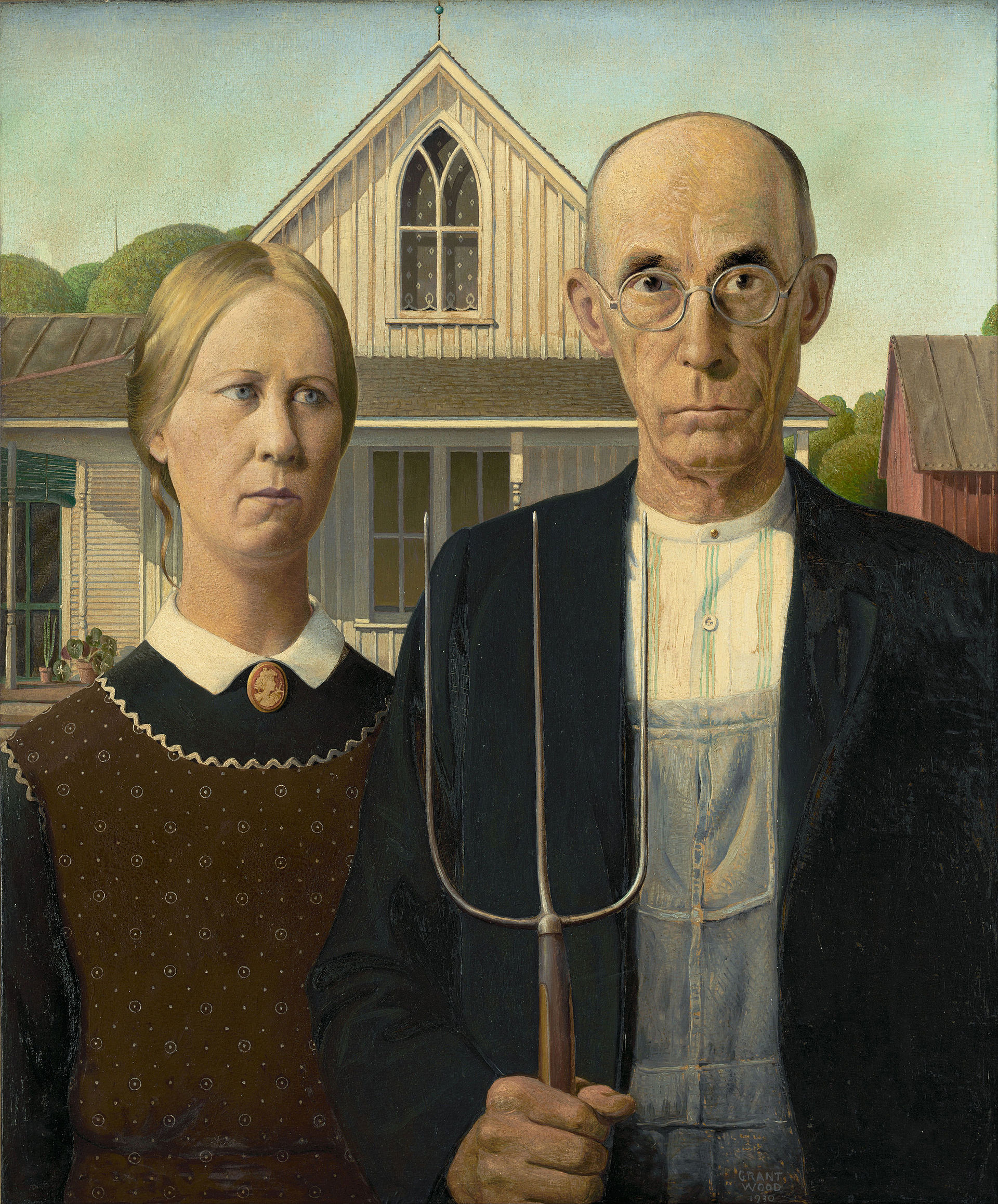
American Gothic, Grant Wood (1930)
This is the case with Grant Wood, who is far more famous for his emblematic 1930 painting, American Gothic, than he is for fame in his own name. Usually housed in the Art Institute of Chicago, which recognised the piece for its iconic depiction of life in the rural American midwest in the pre-Depression age and bought the work, American Gothic is one of the most iconic paintings of the 20th Century, and is currently making its first European visit. For me, it was clearly the highlight of the exhibition currently running at the Musée de l’Orangerie in Paris, American Painting in the 1930s (although I gather that the work, and the show built around it, will soon make its way to London’s Royal Academy too).
Highlights of Grant Wood’s oeuvre

Young Corn (1931)
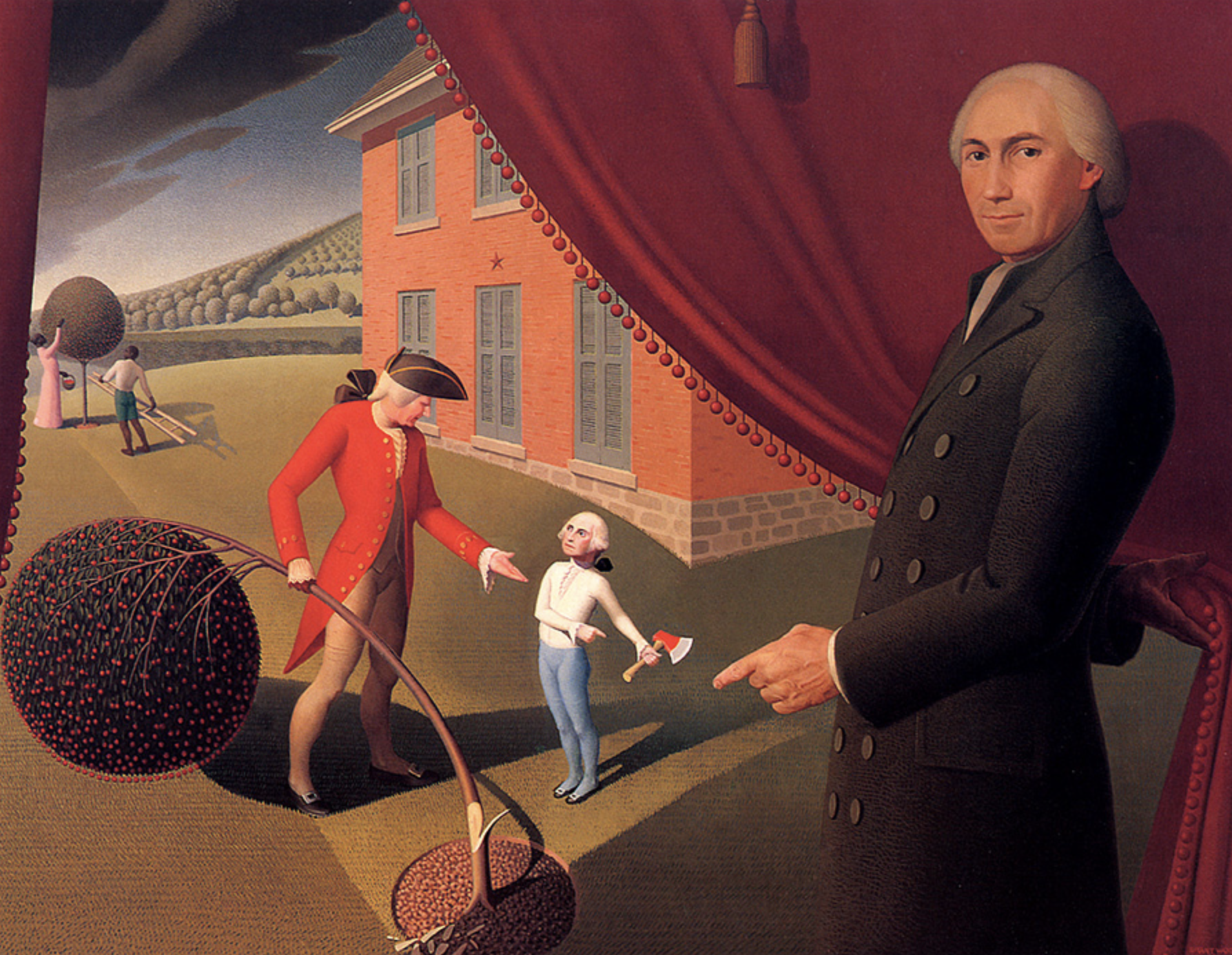
Parson Weem’s Fable (1939)
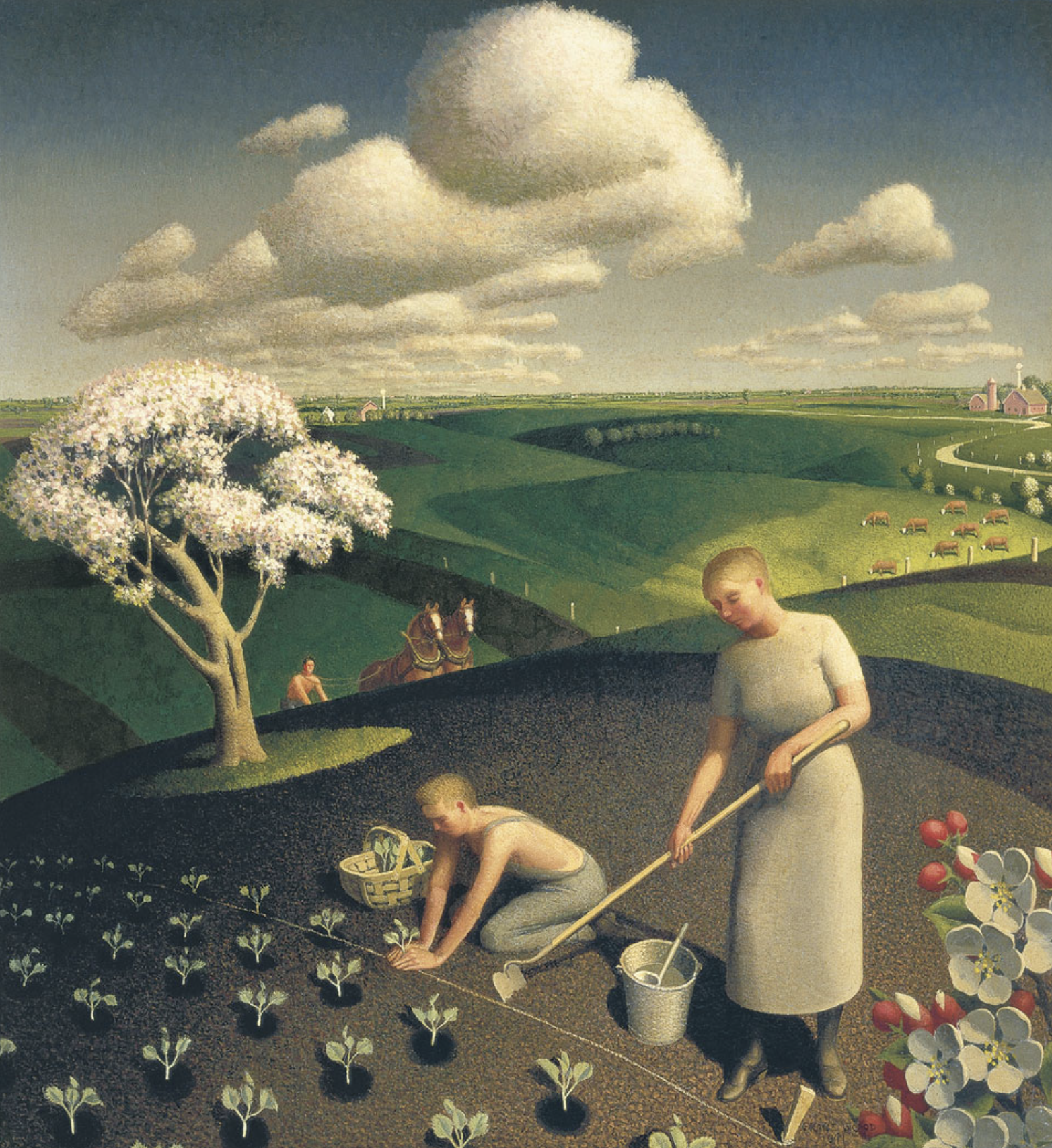
Spring in the Country (1941)

The Birthplace of Herbert Hoover (1931)
However, having swooned over my first face-to-face encounter with this iconic work and taken note of the name of its artist, what I wasn’t expecting was to find how prolific an artist lay behind the painting. For as we made our way around the exhibition, exploring its historically captivating theme of art before, during and immediately after the great American Depression, the name Grant Wood kept on popping up under all of the paintings to which I was instantaneously attracted upon entering each exhibition space.
Born in 1891 and painting until his death in the 40s, Wood’s early work shows the clear influence of impressionism and post-impressionism with more hesitant lines and a play on depicting realistic light. However, by the time he reached the 1930s, the artist had fallen upon a truly unique form of naive reality, depicting in beautifully bold colours and sharp, well rounded lines and figurative forms, the rolling rural landscape around his Cedar Rapids home.

Death on the Ridge Road (1935)
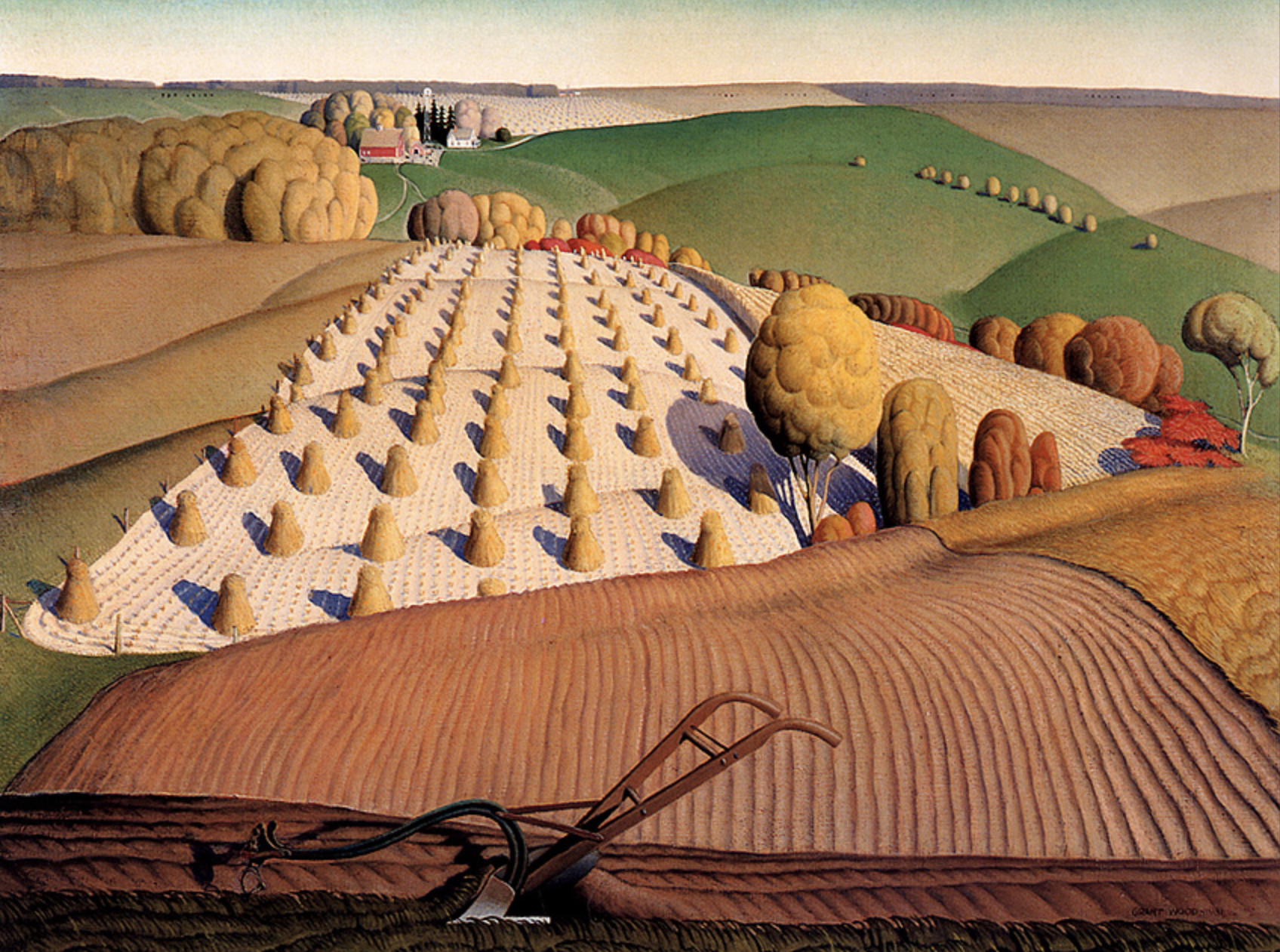
Fall Plowing (1931)

The Midnight Ride of Paul Revere (1931)
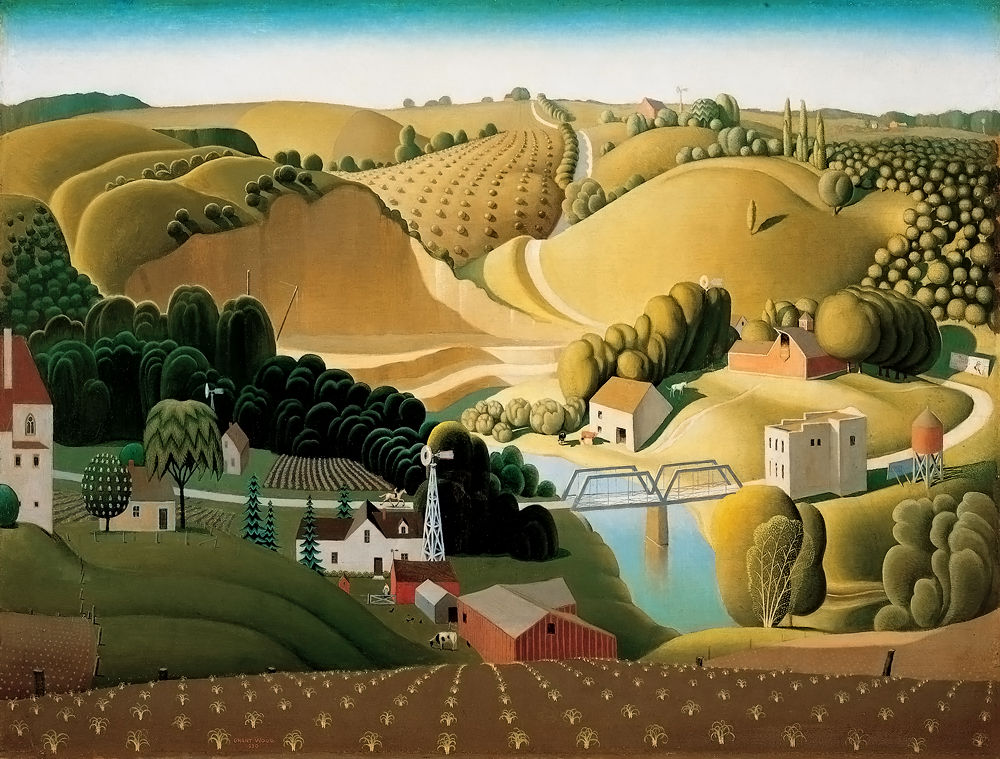
Stone City Iowa (1930)
Without a doubt, my favourites of his works are his exquisite landscapes, painted so idyllically as to be charged with a kind of fantasy-land quality, albeit recognising in their carefully executed details the depiction of agriculture and industry. Reducing trees into rounded, wooly forms, and using idealised shadow to round-off the land like the voluptuous flesh of a Rubens nude, these landscapes are pure works of genius, and why the artist Grant Wood will now remain lodged in my artist consciousness for all time.






































